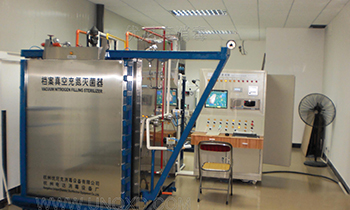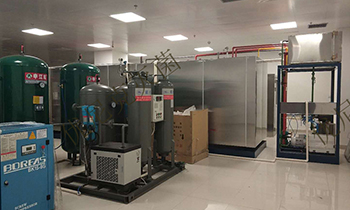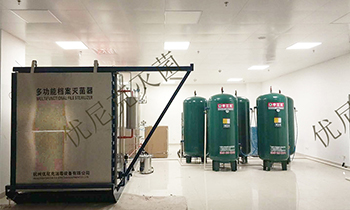
Multifunctional file sterilizers in our company can be divided into three items: sterilization of ethylene oxide fumigation, sterilization of sulfuryl fluoride fumigation and vacuum nitrogen-filled sterilization.
Sterilization of ethylene oxide fumigation
Sterilization of ethylene oxide fumigation: microbiological eradication.
Ethylene oxide sterilizer is special equipment for fumigation and sterilization of articles enclosed in sterilizing chamber under certain temperature pressure and humidity by using ethylene oxide gas. In comparison to former high-pressure steam sterilizer, ethylene oxide gas sterilization has the characteristics of strong penetrability, broad spectrum of sterilization, thorough sterilization, no corrosion and damage to articles. Furthermore, it is achieved under lower temperature, pressure and humidity.
The sterilizing effect of ethylene oxide is related to temperature, pressure, humidity and concentration of ethylene oxide in the sterilizing chamber. If the parameters are controlled on the proper numerical value, then sterilizing time is shorted and the best effect is achieved. Therefore the sterilizing chamber should be heated at first till the temperature is appropriate for sterilization. Then the entire apparatus must be evacuated to the fore-vacuum, after which humidification and dosing to chamber become indispensable parts. Subsequently the timing clock works and sterilizing process runs, during which it is essential to keep constant temperature. The chamber will be disposed of aeration at the end of timing; that is to say, the residual gas in the sterilizing chamber is replaced by filtered clean air. After several times, the residual gas is discharged through exhaust gas treatment system, which is the last step of sterilization.
Sterilization of sulfuryl fluoride
Sulfuryl fluoride, also named sulfur dioxide difluride, is colorless, tasteless and nonflammable gas at ambient temperature and pressure, with a certain toxicity, melting point of 121.4 ℃ and boiling point of 55.2 ℃. Sulfuryl fluoride has a good thermal stability; that is, it does not react with water in the sealing tube heated to 150 ℃. A chemical change will be set off to etch glass when its mixture with sulfur or selenium in 400 ℃ even though it is usually inert to non-metals at ambient temperature. Scorching sulfuryl fluoride can react with hydrogen sulfide or hydrogen, eventually converted to sulfur, water and hydrogen fluoride. Reacting with strong alkali and occurring of hydrolysis, sulfuryl fluoride gas is a precursor to fluorosulfates and sulfamoyl fluorides. Liquid sulfuryl fluoride has high natural vapor pressure, being 1.23Mpa in 10 ℃ and even reaching 1.8 MPa in 25 ℃. Sulfuryl fluoride characterizes as follows: 1. Non-corrosion in equipments and the sensitive place of electronic instruments; 2. Non-burning, odor-free, rapid in volatilization, great in dispersion; 3. Low reactivity and no reaction with materials to produce unpleasant odor; 4. Quickly penetrating into porous materials, dissipating from materials and commodity, and little adsorption on fumigated articles; 5. No damage to the ozone layer and no problem of drug resistance. Therefore, the use of sulfuryl fluoride in fumigation is increasingly being valued.
Vacuum nitrogen-filled sterilization
Nitrogen is usually a colorless, tasteless, odorless and non-toxic gas. Nitrogen accounts for 78.12% (volume fraction) of the total atmosphere, which is the main component of air. It is gaseous state at ambient temperature and pressure, but a non-color cryogenic liquid when cooled to -195.8℃ and even a snow-like solid when cooled to -209.86℃. Nitrogen, an inert and protective gas, possesses stable chemical properties and is applicable in many fields. The preservation of precious cultural relics can be served by nitrogen and technical means, which is increasingly concerned by experts and scholars in the field of historic preservation. After painstaking years of research and tests, our company thoroughly verifies that the vacuum nitrogen-filled sterilization has a great insecticidal effect (nearly 100% of insecticidal rate) and is regarded as a leading, environmental, non-toxic insecticidal measure.


